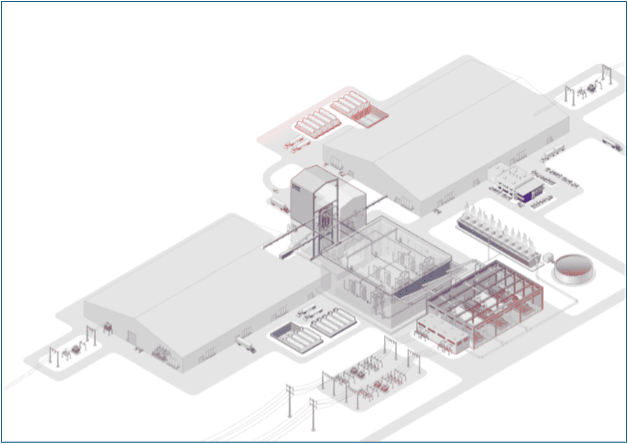A little over a month ago, The Fusion Report did an interview with Conner Galloway (CEO) and Alexander Valys (President and CTO) of Xcimer Energy Corporation, one of the companies pursuing inertial confinement fusion (ICF). On Tuesday, The Fusion Report attended a celebration at Xcimer’s Denver headquarters of their achievement of the longest Krypton Flouride (KrF) excimer laser pulse to date (3 microseconds in length, equivalent to a physical length of 90 meters), an achievement from their Department of Energy (DoE) milestone award. This milestone utilized the Xcimer long-pulse kinetics (LPK) platform laser, which was funded by the DoE milestone award. At this celebration, Xcimer also laid out their company roadmap leading to a prototype fusion electrical power plant by 2035. Let’s review Xcimer’s approach, and what to expect from them over the next 10 years.
So Why Is A Long Laser Pulse for Inertial Confinement Fusion Good?
In the approach taken to ICF at the National Ignition Facility (NIF), the fusion machine converges 192 laser beams onto a target (generally frozen deuterium and tritium contained inside of a plastic capsule to heat (and ablate) the target evenly. Non-uniformities in the beam-fronts (or even in the timing of the beam fronts hitting the target) can cause non-uniform heating and pressure that result in the target “sputtering”, or failing to ignite altogether. While more beams would seem to make uniform heating easier, the actual results are often the reverse unless the system is highly tuned. Multiple beams also make the system very expensive, especially if the lasing medium itself (like Nd:YAG glass, which is what NIF uses) is susceptible to laser damage.
As an alternative to the cost and tuning, Xcimer has chosen a different approach where they use two laser long-pulse length beams, with a larger aperture (e.g., beam width) than the NIF lasers, which reduces the spatial power density of the laser. These beams are then injected into a non-linear lasing medium excited by sound waves, resulting in stimulated Brillouin scattering (SBS). This compresses the laser beam pulse length down to around 3 nanoseconds, which also reduces beam front time irregularities, while increasing the power density of the beam. Combined with beam front shaping and the fact that there are only two lasers with a gas lasing medium, this allows Xcimer to build higher power lasers for a fairly low price (at least relative to the NIF laser infrastructure).
For ICF, Bigger Is Better
For magnetic confinement fusion (MCF) such as tokamaks, the trend has been to build smaller machines (at least compared to ITER, which is massive). This has had the benefit of reducing the investment required for each system iteration, as well as to speed up the iterative process. In the case of ICF, size is measured by the target pellet and laser aperture size. This is the other area that Xcimer has scaled up, using target pellets that are significantly larger than the target pellets used in NIF, and commensurately larger laser apertures. Interestingly, both approaches improve ICF efficiency and power output, as well as decreasing beam front non-uniformity.
The Milestones in Xcimer’s March to Fusion Commercialization
The Xcimer roadmap has three phases to it, leading to a fusion pilot plant in 2035:
Phoenix Demo (2026): The purpose of Phoenix is to demonstrate effective SBS pulse compression, using the LPK laser from the DoE milestone award. The LPK will also be used to validate the overall laser architecture.
Vulcan Breakeven System (2030): The next step will be building the Vulcan fusion energy machine. Vulcan will utilize a 4 MJ laser, with the goal of achieving 10 MJ of fusion power output, exceeding break-even.
Prototype Fusion Power Plant (2035): This system will further scale up the laser power, and include a molten salt thermal blanket to both convert the energy of the fusion reaction to thermal energy, as well as to breed tritium fuel for the fusion machine. Essentially, the prototype plant will prove out the economies of using this ICF approach to generate electricity.
Conclusion: Making Inertial Confinement Fusion Economical
For fusion to be competitive, it has to be competitive on both the cost to build a plant, as well as the delivered cost per megawatt-hour (MwH). Eventually, Xcimer is targeting a cost of $40/MwH of produced energy, which will be highly competitive with today’s energy sources. Furthermore, Xcimer believes that they will be able to build the first grid-connected plants for roughly $3B each, which would also be highly competitive, at roughly half the price of a nuclear fission power plant. If the company can achieve these metrics, it will be a big step towards the scale-up of inertial confinement fusion for commercial electricity generation.







